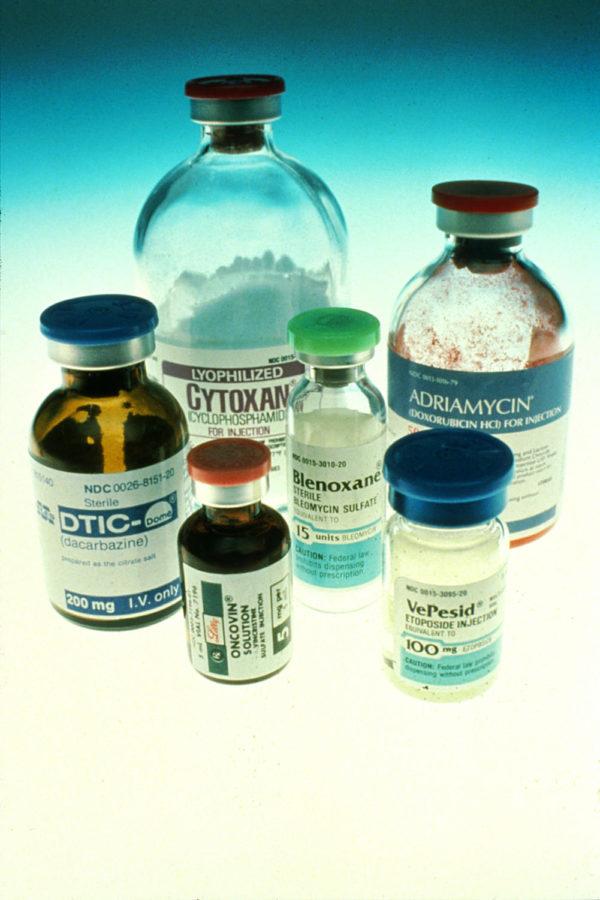King: Pharmaceutical advertising puts drugs in wrong hands
What is the purpose of creating a drug if not to save lives with it? We see this problem over and over again — drug companies have lost sight of their primary goal, which is to help sick individuals who cannot help themselves. Instead of being driven by patient care and compassion, they are driven strictly by profit.
February 16, 2016
Most of us have heard the phrase “Let the buyer beware.” It’s a term used to imply that consumers should realize that it is their responsibility to “ensure the soundness of goods or services prior to his purchase of them.” In most cases, buyers simply need to be aware that they might lose hard earned money if they purchase the wrong product or service. However, in the case of pharmaceutical advertisements, buyers need to realize they are at risk of losing something much more valuable — their health.
We all know how pharmaceutical commercials usually go. The main character of the commercial usually starts out looking distressed or depressed. Then he or she starts taking a new drug and everything changes. Suddenly the character is doing nothing but smiling and frolicking around in a field full of flowers. If he or she is lucky, the drug can even change the weather from rainy to sunny.
At the end, the commercial’s narrator goes on a 20-second rant about all of the potential side effects from taking the drug. While these terrifying side effects are being listed, the characters can’t stop smiling and playing with their dogs along a beautiful lake.
While these commercials are incredibly common in the United States, direct-to-consumer pharmaceutical ads are only legal in one other country, New Zealand. So why has nearly every country in the world decided not to allow these ads?
Pharmaceutical ads usually use a psychological technique called classical conditioning. This means, in its most basic terms, they attempt to get people to associate one stimulus with another. Pharmaceutical companies, specifically, want their drug to be associated with happiness and improvement in overall life.
For example, Cymbalta — an antidepressant — consistently attempts to get viewers to associate the use of the drug with better relationships with their dogs. One Viagra commercial wants the viewer to equivocate the manliness it takes to fix a sailboat with the manliness it takes to start using Viagra. Misleading advertisements promoting ADHD medication attempt to make people think that using psychostimulants such as Adderall and Concerta can lead better grades and improved relationships with friends and family, which might not necessarily be true based on the data.
Pharmaceutical companies are trying to use commercials to get people to realize that certain medications can help them feel better and have better relationships with others. What’s so wrong with that?
The problem with these commercials is that they attempt to appeal strongly to the viewer’s emotions, even though medical diagnoses should be based on scientific evidence. Medical doctors are, of course, the ones who have had years and years of training and are usually aware of the scientific evidence supporting how certain drugs should be used. That’s why pharmaceutical commercials always finish by suggesting that the viewer “talk to his/her doctor” about the medication they’re advertising.
So as long as in the end, the doctor is making the final decision about what to prescribe, then direct-to-consumer drug ads aren’t influencing who gets which drugs, right? Wrong.
Studies have shown that when a patient goes into the doctor and requests a specific medication, he or she is much more likely to receive that medication than something else. This strongly suggests that doctors are choosing which drugs enter their patients bodies not based on scientific evidence but based on a desire to please their patients.
Now that there is evidence that pharmaceutical advertisements can give the medically uneducated patient some say in which drugs he or she is prescribed, I would expect that Americans watch drug advertisements closely to make sure they are not misleading viewers. Also, many advertised drugs are over-the-counter, meaning they don’t require a prescription and should be subject to even more scrutiny. However, this hardly seems to be the case.
The Federal Drug Administration doesn’t review drug ads until they’re already on air and, often times, misleading information easily makes its way to the public. Some studies have found that 60 percent of drug ads were misleading and 10 percent contained flat-out false information. Yet, the FDA rarely requires pharmaceutical companies to pull their ads on the claim that they mislead viewers.
The rise in depression, anxiety disorder and ADHD diagnoses need to be the result of a better understanding of the disorder and not better advertising. The United States needs to either impose much stricter regulations on direct-to-consumer pharmaceutical advertising or outlaw it all together, as it has been in almost every other country.







